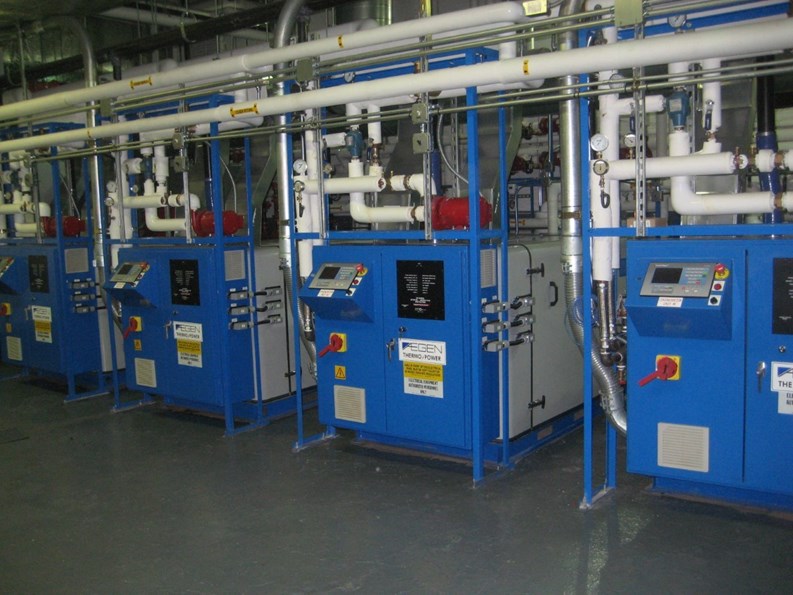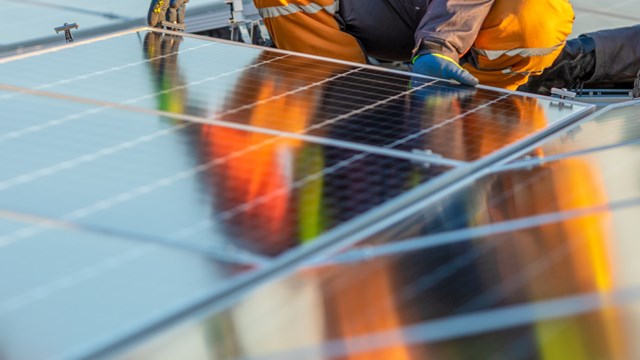With today’s condo and HOA residents much more conscious of their impact on the environment and looking for ways to reduce it, smart boards and property managers are looking to help. Simple tasks like turning down thermostats, shutting off air conditioners during the day, and shutting lights when not in use all help, but there’s more that can be done. More and more buildings and associations are deciding to invest in greener equipment and devices that use less energy and leave a smaller environmental footprint.
“In general, manufacturers and installers tend to emphasize the value of technology, but in reality the importance of attentive workmanship with regard to efficiency and smart systems is nearly always the most cost effective and appropriate route,” David Fleuchaus, president of Energy Reduction Inc., an energy efficiency company in Evanston, Ill., says. “On nearly every job we end up saying that what we are doing is finishing someone else’s work. And we integrate and connect systems after our measured detective work is completed.”
It is important to talk about all the benefits associated with installing energy efficient measures beyond the obvious energy and money savings. Often times, high efficiency equipment requires less maintenance, runs quieter, and improves overall comfort. These are quality of life improvements.
“For instance, reducing the overall air leakage of a building can create more consistent temperatures from room to room and retain conditioned air longer,” says Stacey Paradis, deputy director for the Chicago-based Midwest Energy Efficiency Alliance. “Also, some recent research has suggested that homes that receive third party certifications, similar to those awarded through Illinois Home Performance, actually see an increase in sales price holding all other variables constant. Energy efficiency is not just about reducing costs and our impact on the environment, but is also about increasing the comfort, safety, and value of our homes.”
There’s also a large variety of Energy Star rated appliances and equipment out there and often they’re not more expensive or not much more expensive than any others. When considering if an appliance or piece of equipment is worthwhile for a multifamily building or association to invest in, each HOA will have different criteria for their purchases and upgrades.
Money-Saving Components
A common perception is that replacing old windows with new energy-efficient windows can save a lot of energy, and this is not always the case. Replacing windows can save energy, but is typically less cost effective than tune ups and retrofits to heating and cooling equipment or to the air leakage of the building.
“When considering measures it is helpful to not only consider the payback period of the equipment, but also the reduction in operating costs extending beyond the payback period for the life of the measures,” Paradis says. “Sometimes, the marginal increase for higher efficiency heating equipment can be recouped in a matter of a few years, but that new equipment will continue to save energy (and money) for the next 15-20 years.”
Recent innovations in boiler controls for multifamily units have shown promise to reduce boiler cycling and thus save energy because they modify how the boiler works. These controls, according to Paradis, have fairly quick paybacks.
Speaking of boilers, Fleuchaus says that often he has run into boiler rooms in condos where too much air from the outside is being brought in. That’s why evaluating the ventilation of every area is important.
“An HVAC guy might reinstall the equipment but not look at how it integrates with the whole building,” he says. “You need to do the detective work and make sure that no device is using more energy than it should.”
Demand control ventilation (DCV) is also an option for large buildings. If you have air conditioning on all the time, you must ventilate the space with a certain amount of fresh air. A DCV system monitors the carbon dioxide level in a space and lets you slow down the flow of fresh air within safe levels.
Chillers with variable speed drives are also available or existing chillers can be retrofitted with variable speed drives. You can reduce the speed ranges for fans and pumps by 25 to 30 percent when an area is not in use. When you have an event or an area is in use, you can run the system at its full speed.
Tom McElherne, director of sales at DNR Construction, Inc., located in Oak Forest, Ill., says when working with condo associations and co-ops, he always talks about energy savings in his initial talks with them.
“Every property manager and condo board should recognize that energy codes have changed a great deal since a lot of these buildings have been built, and there are a lot of improvements that can be done,” he says. “For newer places, you have to make sure that the subcontractors insulated properly and that the architecture of the building doesn’t cause problems.”
For example, sometimes a bedroom might be designed over an area that doesn’t have insulation underneath, and some construction work will be necessary to fix.
Money-saving ideas, says DRF Trusted Property Solutions president Scott Schnurr, run the gamut.
“The big hitters are the gas and electric so anything that’s using gas and electric with the exception of roof top A/C units, there are savings opportunities,” Schnurr says. He says that rebates are available that boards and residents should really consider taking advantage of.
Water Everywhere?
The one insidious item that people rarely think of is water usage, he says. In the Chicago market, the infrastructure of the Chicago delivery system, the water mains for the city of Chicago are incredibly old—some are old wood mains. The city said we need to improve this and we need to—about two years ago there was a 25 percent annual increase. That probably nets out to a 98 percent increaseover four years,” according to Schnurr.
“So if you think about an association that has about $100,000 annual spending on water, which is a typical common area expense—that’s doubling,” he adds. Imagine, he says, that they didn’t have projections for this, and they need to spend another $100,000 they didn’t anticipate, that would be a huge shortfall in their budget.
“Historically water was really cheap. Nobody paid attention to it. One of the things as this is creeping up—we have some clients that annually spend over $500,000 a year. Imagine that jumping up to $978,000,” he says based on what those rates will be for the city of Chicago and surrounding municipalities. Some municipalities may be up over 100 percent.
That’s where, Schnurr says, a water audit could come into play. You may pay a small fee per unit but if you check every faucet, every toilet, every system, every shutoff valve, you can readily identify issues where you could be losing 100,000 gallons a year from water leaks.
The numbers are staggering and nobody ever notices it if there’s a water leak, in say, a toilet, he adds. That’s why an energy audit or water conservation audit is so beneficial.
What’s It Gonna Cost Me?
Schnurr believes that prior to purchasing any equipment you should consider if it’s going to generate cash flow or is it going to be a cost.
“A typical example is you have a 40-year-old boiler and a local contractor comes in and takes a look and says ‘I can replace this for $20,000,’ Schnurr says. “Typically that’s a cost because you are going to spend the $20,000. You’re not going to get any savings and you’re going to be yielding the same efficiency you had,” he says.
“An investment on the other hand is if you look at that unit and identify what’s really needed and discover that that two million BTU boiler may need to be only one million. It may be oversized and operating inefficiently. So the new equipment may cost $30,000. So at first glance you might say this one is $20,000 and this one is $30,000 but when you look at the financial analysis, the $30,000 unit will get you a $10,000 rebate and will save you 28 percent annually on your gas bill.”
He points to some case studies of clients his company has serviced. For example, the Windhaven Condominium Association in Palatine recently completed an energy efficient space heating project through DRF’s Trusted Property Solutions’ Resource Conservation Solutions Program that has a projected 20-year savings of $988,029. For the project, 16 boilers were replaced with 32 modulating condensing boilers and 32 commercial water heaters were replaced with 32 indirect fired water heaters that serves the 16-building, 352 unit association. In addition, 352 in-unit programmable thermostats, space heating zone valves and pipe insulation were installed.
In the first three months of operation, according to DRF, each of the 16 buildings has experienced therm savings, with a combined total energy savings over 28%. The indirect fired water heaters include a 15 year warranty versus the standard one year warranty of a commercial water heater. The redundant space heating and domestic hot water system also provides security and comfort, while reducing maintenance.
“When the boilers/hot water tanks were replaced, this turned over with little interruption to the heat or water,” explained on-site property manager Carole Engstrom. “What I thought was going to be ‘Mission Impossible’ became ‘Mission Accomplished’!” Engstrom said, acknowledging that they are very happy with the cost savings they are achieving.
A Bright Idea
One of the easiest and most common places boards look to save money on energy costs is lighting.
The newest generation of solid-state lighting lasts up to 25 times longer than a standard incandescent bulb and saves up to 80 percent in comparison. Replacing common area lighting with LED bulbs can prove to be cost effective over the long run by reducing both operating and maintenance costs.
When considering lighting changes, Fleuchaus recommends the best place to start is with any lights that are on 24/7, like security lights or stair lighting. By switching these with lower-energy lighting, they will pay for themselves within a year’s time. Boards and managers should always check local codes because some lighting is required to be on 24/7.
“Take Exit signs for instance. They are everywhere, but you don’t tend to think about the electricity they use,” he says. “If you go with a modern design exit sign, they use 1/10 of the energy and you don’t have to switch bulbs out for 10 years. That means less maintenance time as well.”
He also recommends adding time or motion controls to lighting that will regulate when lights go on and off and ensure that they aren’t in use when they aren’t needed. Even with traditional lighting technology, some choices are more efficient than others. For example, associations may consider changing out parking garage or outdoor parking T12 fluorescent or metal halide lights to T8 or T5 fluorescents or CFLs.
Professional Audits
Deciding on the “right” piece of new equipment to install—one that will reduce energy and maintenance costs, have the highest return-on-investment, all while maintaining or increasing comfort and safety—can be a daunting task best left to a professional.
Because of this, one of the most consistently sound investments owners can make in their property is an energy assessment.
“A trained professional will perform diagnostic energy tests such as air leakage, duct pressurization, and combustion safety tests,” Paradis says. “An energy auditor will then develop a work scope based on the customized package of measures that will have the greatest impact for your building, and also recommend contractors to do the work.”
Something as simple as a high-tech coffee-maker that’s on 24/7 for residents of a building could be using lots of energy that’s not necessary. An auditor will discover things like that.
Fleuchaus has seen major mistakes in condos that were costing the association lots of money. In one instance, there was an electric heater and exhaust fan both running non-stop in the front lobby of a building. These two systems were basically canceling each other out and no one had any idea. He’s also seen things installed backwards and things that were never set up correctly.
“Things like that happen almost all the time. It takes someone to do an overview of the whole building to find, and this can save you a lot of money,” he says. “It’s worth it to get an energy auditor out who is qualified for a comprehensive overview of the system.”
Money Matters
Typically, more-efficient technologies tend to have a higher upfront cost and reduced operations cost for the lifetime of the technology. This is not always the case, however.
“There are many low and no cost measures that can improve energy efficiency, including replacing incandescent lights, adjusting thermostat settings, and participating in utility direct install programs,” Paradis says. “Other examples are available through Energy Savers at energy.gov. Also, because of market pressures some higher efficient furnaces can actually cost less than lower efficient furnaces over a given range.”
Often, local utilities provide rebates and other financial incentives that help homeowners save money and energy. In one to four unit homes across the state, homeowners can take advantage of this process by participating in Illinois Home Performance with Energy Star (www.illinoishomeperformance.org). Additionally, free energy saving measures are available for larger buildings through local utility programs.
Fleuchaus says that in the Chicago area, rebates for lighting has never been better and as of June 1, other programs have started and there’s a lot more money available this year.
“The state legislature said we need to reduce carbon emissions and imposed restrictions on gas and electric. Year by year they have achieved lower emissions and lower use of energy,” he says. “With rebates the way they are today, you could be looking at 75 percent of cost and instillation paid for by funds. There’s no better time.”
Don’t assume, Schnurr says, that green technology always costs more. “Typically if it’s designed right, it always cost less,” he says. “If it’s designed and installed correctly it will pay for itself. So the cost should be cash flow neutral or cash flow positive. Your cost of entry may be marginally more but your cost of ownership dramatically less. On our projects typically they are saving more on the rebates and the savings that that piece of equipment is going to pay for itself in five years.”
For more information on programs available to improve your multifamily condo visit: www.ComEd.com for information on the Multi-Family Home Energy Savings Program that provides tenants with water-saving measures and CFLs. For government incentives, visit www.Energystar.gov. HOAs and boards should also consult their own tax attorneys for possible savings.
Keith Loria is a freelance writer and a frequent contributor to The Chicagoland Cooperator.







Leave a Comment